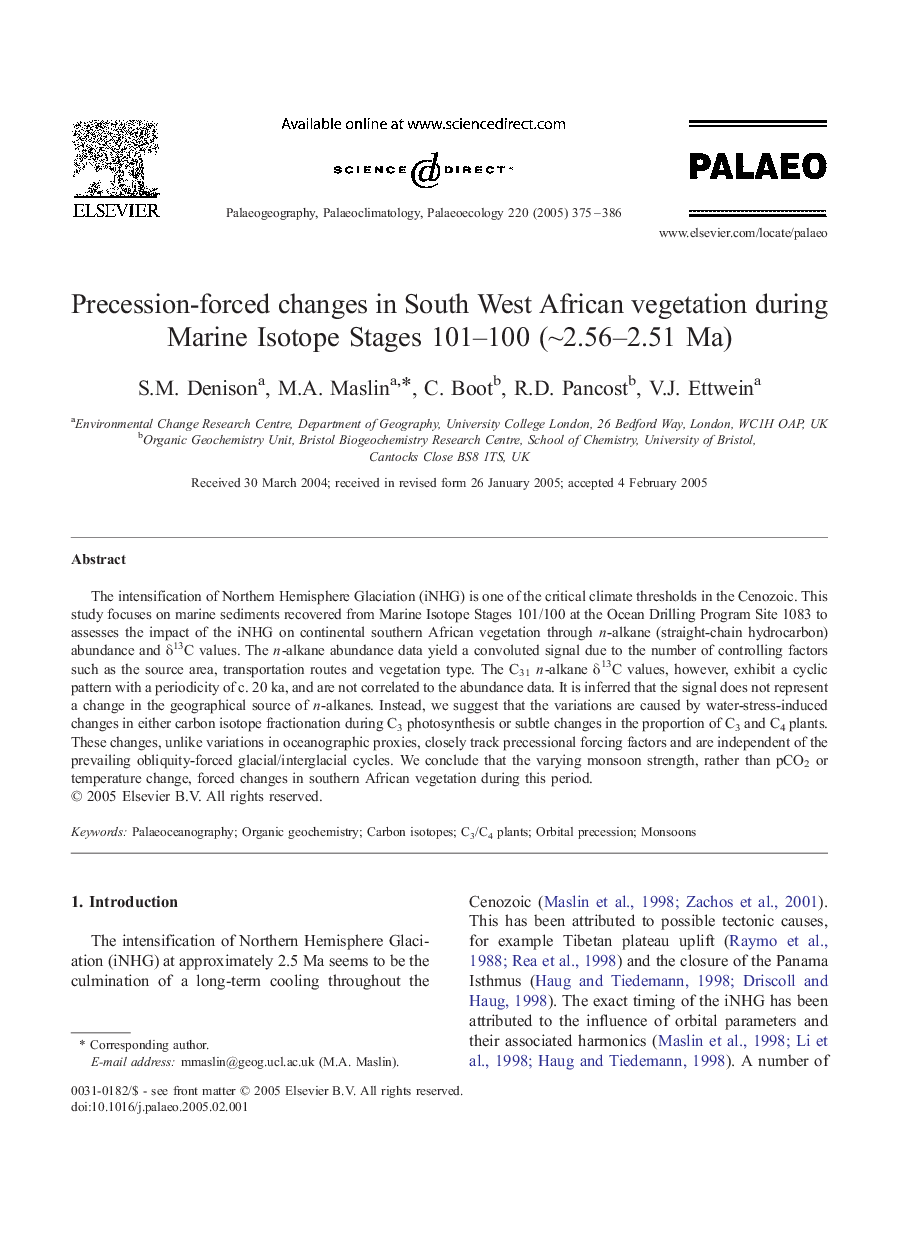| Article ID | Journal | Published Year | Pages | File Type |
|---|---|---|---|---|
| 9463183 | Palaeogeography, Palaeoclimatology, Palaeoecology | 2005 | 12 Pages |
Abstract
The intensification of Northern Hemisphere Glaciation (iNHG) is one of the critical climate thresholds in the Cenozoic. This study focuses on marine sediments recovered from Marine Isotope Stages 101/100 at the Ocean Drilling Program Site 1083 to assesses the impact of the iNHG on continental southern African vegetation through n-alkane (straight-chain hydrocarbon) abundance and δ13C values. The n-alkane abundance data yield a convoluted signal due to the number of controlling factors such as the source area, transportation routes and vegetation type. The C31n-alkane δ13C values, however, exhibit a cyclic pattern with a periodicity of c. 20 ka, and are not correlated to the abundance data. It is inferred that the signal does not represent a change in the geographical source of n-alkanes. Instead, we suggest that the variations are caused by water-stress-induced changes in either carbon isotope fractionation during C3 photosynthesis or subtle changes in the proportion of C3 and C4 plants. These changes, unlike variations in oceanographic proxies, closely track precessional forcing factors and are independent of the prevailing obliquity-forced glacial/interglacial cycles. We conclude that the varying monsoon strength, rather than pCO2 or temperature change, forced changes in southern African vegetation during this period.
Related Topics
Physical Sciences and Engineering
Earth and Planetary Sciences
Earth-Surface Processes
Authors
S.M. Denison, M.A. Maslin, C. Boot, R.D. Pancost, V.J. Ettwein,
